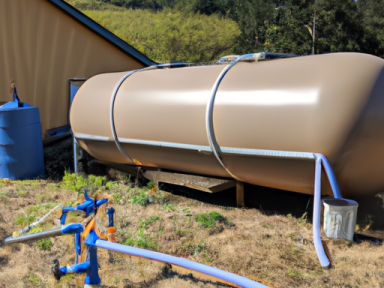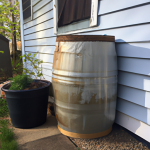
Biogas Energy: Harnessing the Power of Nature for Off-Grid Living
Imagine a world where you can produce your own energy, without relying on external sources or being at the mercy of power outages. Picture a life where you have control over your energy supply, even in the most remote locations. It may sound like a dream, but it is entirely possible with the power of biogas energy.
In our modern society, we have become strongly dependent on fossil fuels and centralized energy grids. However, in times of crisis or uncertainty, these systems can easily fail us. That’s where biogas energy shines – it provides a reliable and sustainable solution for off-grid living and self-reliance.
So what exactly is biogas energy?
Biogas energy is a form of renewable energy that is produced through the breakdown of organic matter, such as animal manure, crop waste, or even kitchen scraps. This process, known as anaerobic digestion, occurs in an oxygen-free environment, allowing microorganisms to break down the organic material and release methane gas.
Why should you consider using biogas energy?
1. Energy Independence: By generating your own biogas energy, you are no longer dependent on the grid. This means that even during power outages or natural disasters, you can still have access to electricity and heat.
2. Sustainability: Biogas energy is a sustainable alternative to traditional fossil fuels. By using materials that would otherwise end up in landfills or emit harmful greenhouse gases, you are reducing your carbon footprint and contributing to a cleaner environment.
3. Cost Savings: While the initial setup of a biogas system may require an investment, over time, the cost savings can be significant. Once your system is up and running, the fuel source is essentially free, as it comes from waste materials that you already have on your homestead or farm.
How can you create and use biogas energy?
1. Designing your biogas system: The first step is to determine the size and type of system that best suits your needs. There are various designs available, including fixed-dome, floating-drum, and plug-flow digesters. Consider factors such as the amount of organic waste you have available and the energy demand of your household.
2. Gathering the organic material: Collect organic waste, such as animal manure, crop residues, or food scraps. Ensure that the materials are free from contaminants, such as chemicals or plastics, as they can negatively affect the digestion process.
3. Building your digester: Constructing a biogas digester can be a DIY project or you can seek professional assistance. The digester acts as an airtight container where the organic material undergoes anaerobic digestion and produces biogas. It is important to follow proper safety measures during the construction process.
4. Using the biogas: Once the biogas is produced, it can be used for various purposes. It can be used directly for cooking, heating, or lighting by connecting it to appropriate appliances. In some cases, the biogas can also be converted into electricity using a generator or fed into a gas grid.
Final Thoughts:
Biogas energy is a game-changer for those seeking self-reliance and preparedness. It offers a sustainable and cost-effective way to produce energy while minimizing your impact on the environment. By harnessing the power of nature, you can significantly enhance your off-grid lifestyle.
So, why wait for the next power outage or crisis to strike? Take control of your energy future and explore the possibilities of biogas energy for your homestead or off-grid living today. Your journey towards self-sufficiency starts here.



GIPHY App Key not set. Please check settings